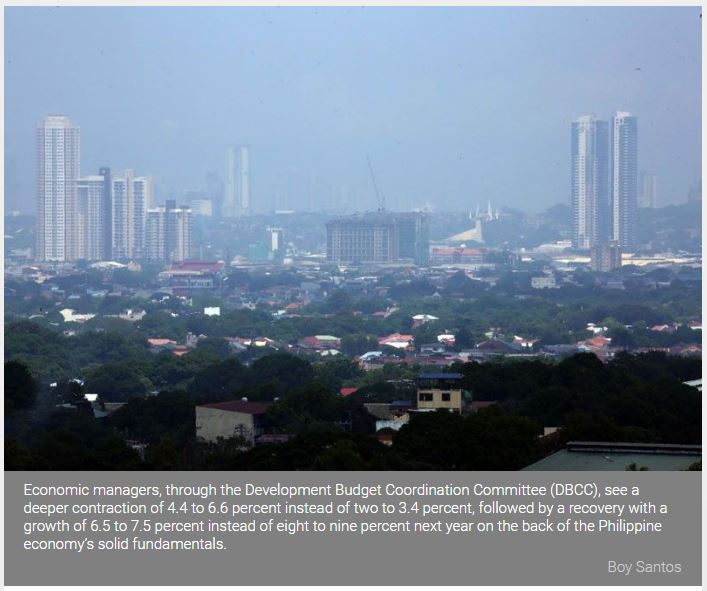‘Philippines recession to last until 2021’
MANILA, Philippines — The Philippine economy continues to lose steam and is poised to remain in recession until 2021 amid the raging COVID-19 pandemic, according to Dutch financial giant ING Bank.
In a report, ING Bank Manila senior economist Nicholas Mapa said there is little hope of a big turnaround for the Philippines in 2021 as the Philippines’ gross domestic product (GDP) contracted by 10 percent from January to September.
“The Philippines is poised to remain in recession for a couple more quarters, with trends pointing to sustained weakness across key sectors. Government officials remain confident of a quick turnaround, but signs of soft consumption, decelerating investments and lackluster government spending all suggest otherwise,” Mapa said.
The country slipped into a recession due to containment measures to prevent the spread of the virus. The GDP shrank by 11.5 percent in the third quarter, a record 16.9 percent in the second quarter, and 0.7 percent in the first quarter as Luzon was placed under enhanced community quarantine in the middle of March.
Economic managers, through the Development Budget Coordination Committee (DBCC), see a deeper contraction of 4.4 to 6.6 percent instead of two to 3.4 percent, followed by a recovery with a growth of 6.5 to 7.5 percent instead of eight to nine percent next year on the back of the Philippine economy’s solid fundamentals.
“ING maintains that growth will likely enter a lower trajectory as current trends point to a very different scenario heading into 2021, with the Philippine economy missing contributions from every sector of the economy,” Mapa said.
The economist warned worrisome trends for consumption, capital formation, and government spending are not likely reverse quickly even as lockdown restrictions are relaxed with the shift of the National Capital Region (NCR) to general community quarantine in June.
ING Bank sees remittances from overseas Filipino workers dropping between five and 10 percent this year, resulting in a decline of up to $3.1 billion in 2020 and 2021. The drop in OFW remittances is also expected to result in slower household spending.
“Household consumption delivers the bulk of Philippine economic output and we expect this sector to struggle given elevated unemployment, virus concerns and fading remittance flows,” Mapa said.
Mapa also said investment momentum continues to stall, while potential output fades.
“Prior to the pandemic, capital formation was increasing, thanks to a construction boom coupled with the administration’s hallmark infrastructure program, but the current trends point to stalling momentum for this sector,” he said.
He said the recent downturn in capital goods would weigh on potential output as corporates are likely to put off large-scale investments given the recession to protect cash and weather the downturn.
“Meanwhile, declining investment momentum is mirrored in trends for commercial bank lending, which has now been decelerating for five months through August,” Mapa said.
The Bangko Sentral ng Pilipinas (BSP) has been doing all the heavy lifting, unleashing close to P2 trillion into the financial system to help soften the impact of the pandemic on the economy.
ANZ Research economist Kanika Bhatnagar said the recent rate cut would have limited boost to economic recovery.
Bhatnagar said the faltering consumer and business confidence, along with elevated global economic uncertainty, seems to have taken precedence over the earlier priority of strengthening policy transmission.
“Given the turnaround in policy priority, we do not rule out further rate cuts next year. Even so, in our view its efficacy will be limited by weak transmission,” Bhatnagar said.
Source: https://www.philstar.com/business/2020/11/23/2058705/philippines-recession-last-until-2021


 English
English




